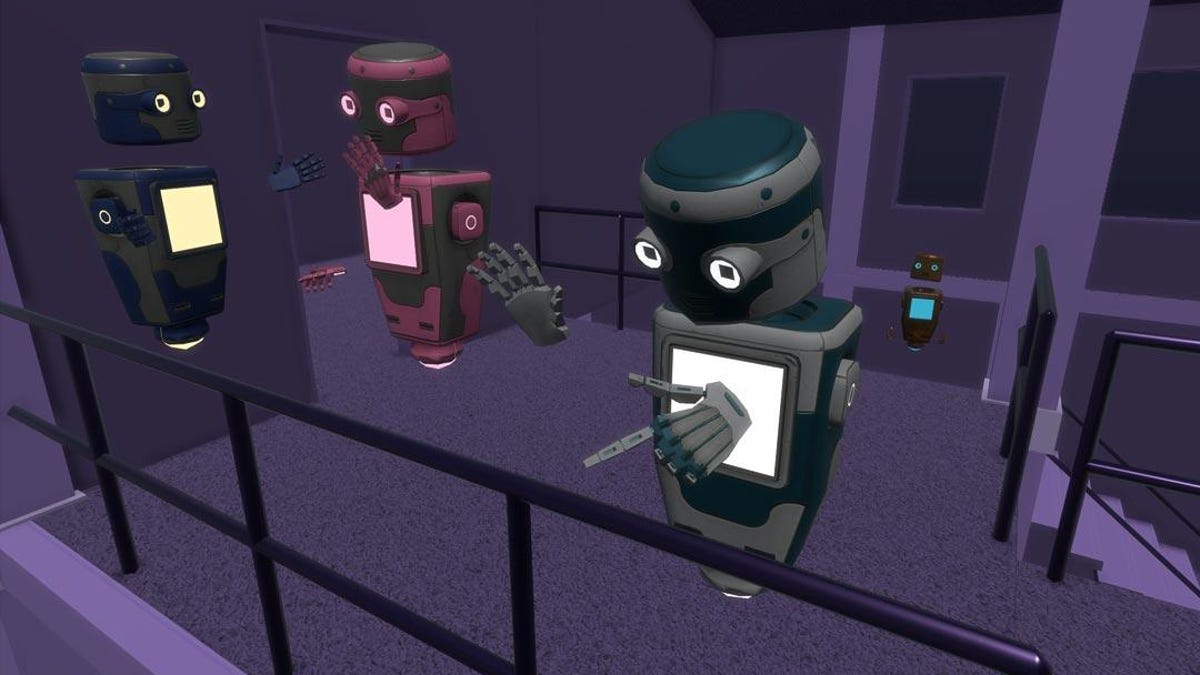Mozilla's Hub experiment brings VR chat rooms to the web so your avatar can chill in a browser
The Firefox developer wants to marry web browsers to virtual reality and augmented reality with technology called WebVR and WebXR.

Hub by Mozilla lets your avatar hang out with others in a chat room you set up. You can communicate by voice once you let your browser access your microphone.
You may not remember Second Life, a virtual world where your 3D avatar could hang out, interview techie celebrities, join conference calls, and sell furniture. Though interest peaked years ago, virtual reality is still around, and Mozilla now has launched something of a Second Life sequel.
But this time, instead of downloading and installing special software, you just open a website with a PC, phone or VR headset.
Technology called WebVR that Mozilla helped pioneer lets developers build 3D worlds, and now WebVR-capable browsers and tools like Mozilla's A-Frame mean online fantasy realms are a lot easier to build. This new virtual world, called Hubs by Mozilla, offers chat rooms with an ordinary web address you can share to invite friends.
It's just an experiment for a new type of social interaction, designed more to showcase what's possible on the modern web than it is to get you thinking the Metaverse from Neal Stephenson's sci-fi Novel Snow Crash is finally here. So look at it more as a demo than the answer to VR's interesting-things-to-do problem.
Mozilla is trying to make VR an ordinary part of the web, a move that could make life easier for developers wrestling to support numerous often incompatible virtual reality and augmented reality devices. Hubs by Mozilla involves "no app downloads, walled gardens or content gatekeepers," Mozilla VR team member Greg Fodor said in a blog post Thursday.
Firefox, Apple's Safari and Google's Chrome support WebVR, and Microsoft has pledged to bring it to its Edge browser. Mozilla also is working on a version of Firefox designed specifically for VR headsets. Meanwhile, browser makers are working on a more powerful successor to WebVR called WebXR that adds support for augmented reality technology that could hold more mainstream appeal.
The Smartest Stuff: Innovators are thinking up new ways to make you, and the things around you, smarter.
Follow the Money: This is how digital cash is changing the way we save, shop and work.

